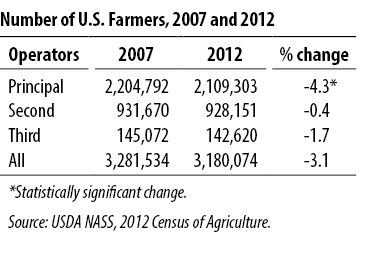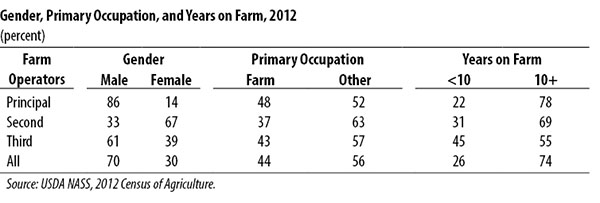by
[user not found]
| Jun 16, 2015
The American agriculture business is a massive portion of the United States economy. A multi-billion dollar industry encompassing far more than just crops, feed, grain and livestock. The agriculture business in the United States, as the United States Department of Agriculture defines it, includes many more satellite industries including forestry, fishing, food, beverage, tobacco, textiles, apparel, leather products, food services and much more,
Agriculture is big business rich with opportunity, but like with any opportunity and decision making process it helps to understand the full picture first.
Here are 4 must know things about the American agriculture industry.
1. Agriculture is One of America’s Most Dangerous Industries to Work In
Agriculture is a dangerous industry.
How dangerous?
In 2012, agriculture was listed number 4 on Yahoo’s list of 10 most dangerous jobs in the United States. Agriculture, and specifically feed and grain, are such dangerous areas of work because of:
Agriculture was, again, deemed among the most dangerous industries to work in in 2013 by Farmers Weekly and Health and Safety Executive.
2. Agriculture is a Family Affair
According to the 2012 census of American agriculture:
- 3.2 million farmers operated 2.1 million farms
- 44% of all farms reported having 2 operators and 7% reported 3 operators
- Farm operators tend to be older males who see farming as their primary profession. Second operators are usually (67%) women and the spouse of the primary operator

- Most farms are operated as a family operation
- Principal owners tend to be between the ages of 45 and 65 with the average age being 58.
- Since 1982, the average age has been increasing by 1-3 years every 5 years starting at age 50.

Most, or at the very least a sizable majority, of American agriculture comes from family owned farms.
Farms are passed down from one generation to the next with the hopes that the new generation will carry on the family’s biggest asset and livelihood.
Few farms sprout up organically and don't have some kind of connection to a family or a family lineage so it's important to remember that farms in most cases
3. Financially, American Farms Have a Lot to Worry About
Working in agriculture means being subject to many variables that can affect the total price of farming. Many of these variables are out of the farmer’s hands.
Weather, soil conditions, climate changes, changes in equipment rental prices, changes in market valuation of farm equipment and many more all factor in to the collective bottom line of the American farmer.
“We face lower incomes, inflated land values and raising costs to farming. We have plenty of reasons to be worried” said one farmer was quoted saying in one CNBC article.
As of recently, land prices and the topic of debt have become the biggest issues.
"Land values can't stay as high as they are now," said [Blake] Hurst, [a farmer who grows corn and soybeans on a 450-acre farm in Tarkio, Mo] and who's written on the subject. "They've increased at a double-digit rate for the last seven years in the Corn Belt..."
"We can see debt already increasing," Hurst said. "A Kansas Farm Management Association report says that the number of farmers with a 40 percent debt ratio is higher now than it was in 1979," and that there are three times as many farms with a debt ratio of more than 70 percent, he added.
4. There’s a Shortage of Railcars in the United States (and it’s Costing Farmers)
On the heels of the point made above, there are many outside influences that can positively – or negatively – affect the bottom line of an American farm.
Alongside land prices and debt, as of late 2014 one of the biggest issues has been the shortage of railcars and crop-transportation mechanisms.
As the Wall Street Journal points out and one NBC News article backs up, “used grain hoppers – some of which are more than 30 years old – are leasing for about $400 a month, up 40% from a year ago. Some new hoppers are leasing for twice that amount.”
The article goes on to explain that the cause of the shortage today and in recent years is directly tied to the 2008 financial crash. “During the 2008 recession and its aftermath, [railcar] car owners scrapped thousands of cars after customers decided now to renew leases. When demand picked up recently, car owners were short-handed, especially for grain hoppers…”.
Farms don’t just lease a few cars come harvest season. The number of cars leased though a multi year contract can be in the high hundreds and thousands.
Take a moment and calculate what $400 dollars times a conservative number like 500 amounts to. It’s a staggering number that farms and distribution companies must shoulder to get their harvest to storage and beyond.